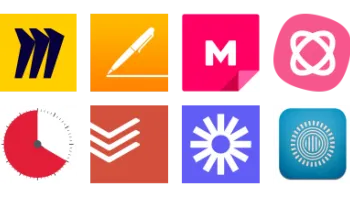Take a look inside 5 images
ZoteroBib
Pros: The excellent, clean layout simplifies generating citations in any style and for any source.
Cons: Not all sites work with the auto-generation feature. Auto-generated citations often need tweaking.
Bottom Line: An intuitive site that takes the stress out of citing sources, but students will still need instruction to tweak auto-generated citations.
Add ZoteroBib to your class website or to your students' list of references for research papers or projects, and your students will thank you. Students can easily type in a title or paste in a URL, select the citation style, and export one or more quickly-generated citations. Students will still need a primer ahead of time, as well as some trusty references like Purdue's OWL, to check and tweak whatever citations they generate. While ZoteroBib is a handy resource, it makes mistakes, so make sure students know to double-check and modify.
Since ZoteroBib supports all kinds of publications and media, encourage students to use a range of sources -- from traditional to nontraditional -- by inviting students to manually create a citation for things like social posts, instant messages, emails, or interviews. To further validate their own research and knowledge, students can also cite peer presentations by using the manual entry option for "presentation." To help students understand citation formats more deeply, have them generate citations for the same title in different styles and note the differences. Discuss why English teachers may require APA or MLA, while college history professors may ask for Chicago.
ZoteroBib is a simplified site for generating citations and bibliographies. Users can generate citations automatically by searching for a publication; pasting a URL, ISBN, DOI, or other publication ID in the search bar; or manual entering a citation. Once the citation is generated, there's a drop-down menu that allows the citation to be converted to 9,000 styles, with the most popular (MLA, APA, and Chicago) conveniently at the top of the list. Auto-generated entries can also be edited for accuracy. After generating citations and assembling them into a bibliography, users can download the bibliography, copy it (clipboard and HTML), or create a URL.
ZoteroBib is super intuitive, but it isn't perfect. If students are searching for sources, they're not always going to find what they're looking for -- especially compared to more established sites. Also, some websites don't seem to work when you paste the URL in the citation generator. Still, the manual editing and entry feature means anything can be cited if students put in the work. The support for all kinds of different media -- from artwork to podcasts to audio recordings -- and the thousands of styles mean students have tons of options. There's no option for tweets or snaps yet, but the "blog post" and "instant message" options will likely do the trick.
Typing a title and clicking "cite" is simple enough, but ZoteroBib's clean and functional design makes the process of citing multiple sources even easier. For those needing assistance, there are short and sweet explanations to key questions at the bottom of the home page or in the Q&A section. Unlike other citation sites that look like college-library catalogs, there's no small text or confusing options in the minimalist user-friendly layout, helping students focus and easing the stress of a major research paper or project. Compared to other sites, there are no pop-up ads, and there's far less clicking, searching, and scrolling, which means more efficient use of time in the computer lab or at home.
As with any citation generator, there's a risk that students won't build the foundational skills necessary to know if the citations they're making are accurate or not. This is where teacher instruction or focused assignments can take ZoteroBib from a lifesaver to a life skill.













